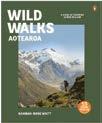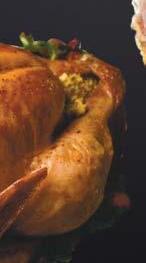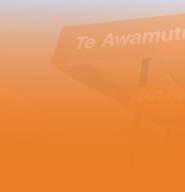

Incinerator site ‘wrong’
By Chris Gardner
Waipā District Council is drafting a submission against the building of the Paewira waste to energy plant in Racecourse Road in Te Awamutu.
Councillors who debated the plan last week said they believed the wrong site was being looked at.
A board of inquiry is to decide Global Contracting Solutions’ resource consent application to build the plant near homes, a childcare centre, college, Fonterra dairy factory and Mangapiko Stream.
Te Awamutu-Kihikihi General Ward councillor Andrew Brown summed up the council’s position towards the end of a submission workshop for elected members last Wednesday.
“Even if I was completely reassured as quality of emissions, which I am not, this is surely in the wrong place.”
The proposal would see the facility burn around 480 tonnes of car bodies, plastic, tyres, commercial and industrial waste every day. Steam from the waste would be used to generate electricity.

Cambridge Ward councillor Roger Gordon agreed with Brown.
“My main concern really is that it is new technology, and while there are many statements being made about the quality of emissions it’s unproven, and we don’t know what the future impact is going to be,” he said.
Council strategy group manager Kirsty Downey told elected members the council submission should be focussed on location, placemaking, community interest and community wellbeing.
“The point we should be communicating to the board is that there is not enough evidence that the proposed waste to energy plant will actually uphold our community wellbeing,” she said.
“A social impact assessment was requested from the applicant back in December of 2023 and that hasn’t yet been provided. So, as part of that submission, we would also be recommending that we request a social impact assessment be provided by the applicant.”
Pirongia-Kakepuku councillor Clare St Pierre suggested there




may be more appropriate sites.
“I am quite concerned about its proximity to Fonterra because it’s a food processing plant.”
Downey said council staff recommended the submission discussed the possibility the location of the proposed plant may adversely affect the amenity and character of the adjacent residential area, as well as Te Awamutu and Waipā being a desirable district to live, work, invest in, recreate in.
Fonterra submitted against the construction of the plant, before the application was called in by
the board.
Waipā district mayor and dairy farmer Susan O’Regan looked at a worst-case scenario, and the long-term impacts on an agricultural sector scale.
“The stakes are extremely high, and I want to make sure that the inquiry around those negative impacts isn’t just limited to the neighbouring streets.”
Around 800 submissions have already been received regarding the application, the majority in opposition. Submissions close on December 18 and the board will have nine months to decide.
Cones kept in cupboard
By Mary Anne Gill
Two trials where Waipā District Council uses fewer road cones and signs at worksites have resulted in reduced worksite congestion and less disruption to road users and residents.
Fire main replacement in Te Awamutu – at Palmer, Fraser, Bradey, Jackson, Redoubt and Vaile streets – and the Grey St pathway in Cambridge are the guinea pig projects, Human Resources Operations manager Clark Collins told the Finance and Corporate committee this week.

“This innovative approach ensures that traffic management decisions are based on an assessment of actual risks encountered at each worksite, rather than following a purely compliance focused method as outlined in the Code of Practice for Temporary Traffic Management,” he said.
The two trials are continuing but an earlier trial, implemented during watermain replacement work in Cambridge and Te Awamutu, used another risk-based approach.
Workers reduce controls in localised areas in contrast to the code’s approach which typically requires the full traffic management setup until the whole job is completed.
The code approach is well established in New Zealand and it will take time for the “risk-based method” to gain broader acceptance, he said. Waipā District Council would continue to collaborate with contractors for other projects the approach could be used, Collins told the committee.


Waipā has been a cone zone.
A 3D digital model of the proposed waste to energy plant development published in a landscape and visual assessment report.
Waipā’s Tron man in print
The life and comics of a Waipā artist who suffered a debilitating disease are being celebrated in two volumes of his work.
Dean Ballinger, who died at age 48 in 2022 after enduring Motor Neuron Disease, produced cartoon strips and comic zines for more than two decades.
They ranged in style from new mythology and sci-fi, to conceptual art jokes and toilet humour.
Ballinger, from Te Awamutu. was credited with coining the title ‘Hamiltron’ and ‘The Tron’ to describe Hamilton in the late 1990s alongside fellow radio DJ Greg Page and “call-in-listener Brian”.
A group of his friends are publishing two books of his comics.
Mark Servian, editor and project manager,

This newspaper is subject to NZ Media Council procedures. A complaint must first be directed in writing, within one month of publication, to the editor’s email address.
If not satisfied with the response, the complaint may be referred to the Media Council P O Box 10-879, The Terrace, Wellington 6143. Or use the online complaint form at www. mediacouncil.org.nz
Please include copies of the article and all correspondence with the publication.
CONTACTS
News/Editorial
Roy Pilott editor@goodlocal.nz
027 450 0115
Mary Anne Gill maryanne@goodlocal.nz
021 705 213
Viv Posselt viv@goodlocal.nz
027 233 7686
Chris Gardner chris@goodlocal.nz
027 231 7007
Advertising Director
Janine Davy janine@goodlocal.nz
027 287 0005
Owner/Publisher
David Mackenzie david@goodlocal.nz
Office/Missed Deliveries
07 827 0005 admin@goodlocal.nz
says the two volumes present three artistic genres.
“OHU is the never-before-seen graphic novel written and pencilled by Dean, and then inked and coloured to completion by Aaron Christiansen. It is a fun story that will appeal to adults and kids alike.
“The other volume is actually two books in one - the Dean Ballinger Anthology is two collections back-to-back, reflecting Dean’s two very different bodies of work, the art
and the comedy” Servian said.
OHU is a 116-page graphic novel about three friends on a quest across a psychedelic Waikato.
“Think of it as a Yellow Submarine in the Waikato, in the format of an Asterix book,” Servian said.
Ballinger began working on OHU in 2014, with Aaron Christiansen then working with him on the art over the last year of his life.
“I got to know Dean over a few years

the beat with Senior Constable DEB HANN
Take note: forgeries are here
Police are aware a few counterfeit $50 notes have been recently presented around Cambridge.
If you work in retail in Waipa, please be sure to train your staff on what to look out for, especially when handling larger denominations.
In newer (series 7) bank notes, there is a metallic stripe visible in the bird, that moves up and down when a genuine note is tilted. You should also see a fern showing through the bird when you hold it to the light. In older (series 6) notes with the oval and fern shaped clear windows, a watermark of Queen Elizabeth II is present when it is held up to a light source. UV responsive patches are present on all genuine bank notes of all denominations (regardless if series 6 or 7).
Counterfeit notes also usually have a white edge when seen side on (for example in a stack). Genuine notes do not. If you detect a counterfeit note and the person tendering it is still in store or has just left, call 111. Provide as much information as possible in relation to the person and any vehicle involved.
Handle the note with gloves once detected and immediately place in a paper envelope




TRACEY HALL ASSOCIATE 07 222 3346 thall@jacal.co.nz



for storage. Resist the urge to pass it around amongst staff and hand in to police.

On to a good catch this week.
Police received a report of a male making threats to a local charitable organisation, this was then followed by aggressive behaviour a short time later at a second charitable organisation. Police attended and the male continued to be aggressive and threatening. He resisted and assaulted attending staff but was arrested and has appeared in court on several charges.
Also in the last seven days in Cambridge, police dealt with five assaults, six traffic crashes, two mental health jobs, three drug related jobs, 12 burglaries, seven incidents of vehicle crime, four thefts, seven family harm incidents, three bail breaches, two drunk drivers and a fleeing driver.
In Te Awamutu, calls for service included five assaults, threatening behaviour, three mental health incidents, four traffic crashes, two missing people, 13 burglaries, eight family harm incidents, two trespass incidents, three bail breaches, four thefts from cars and three fraud matters.
through us both contributing comics to Waikato student mag Nexus, and zines Bristle, Sonic Comic and Dean’s group anthology Hamiltron: City of the Future,” said Christiansen.
That bill
Finally, we can all see that the three part Treaty Principles Bill is no threat to anyone and does nothing to diminish or alter the treaty signed by Hobson on behalf of the Crown and the 500-plus tribal chiefs throughout New Zealand. Anyone claiming otherwise lacks an understanding of our history or is influenced by misinformation. Many possibly have a vested interest as well.
The true treaty, recognised by international law was the one written in Māori. Sadly, that document is not recognised within New Zealand law today as by legislation enacted in 1975 the English version only is recognised and all subsequent legislation stems from it. The English version, of which there are many differing copies bears little resemblance to that signed by the chiefs. It is lengthy, uses flowery language and contains many words absent in the signed treaty, such as forests and fisheries. My wish would be for democracy to run its course in the select committee process, which should not require six months. I don’t think a referendum is the final answer. What I would like is for the coalition government to promise, with specific detail, to revisit the 1975 Treaty of Waitangi Act. That Act is the root cause of the much of today’s unrest.
Murray Reid Leamington



Book a free, no-obligation chat with Tracey or Tarsha in our Tamahere office to explore how we can help you and your business.
07 222 3342 tirwin@jacal.co.nz www.jacalsouthisland.co.nz



Dean Ballinger’s work is being published in two books.
THURSDAY
Traffic talk
Transportation manager
Bryan Hudson briefed Waipā councillors at a workshop this week on traffic calming measures in place across the district. The initiatives reduce excessive speed, provide safe crossing places, reduce rat running (taking shortcuts), create attractive urban spaces and reduce crashes and injury severity, he told councillors. Cambridge councillor Roger Gordon disputed how speed bumps had been installed in areas where no consultation had taken place with the community.
Christmas parades
The annual Cambridge Christmas parade will be held on Sunday - and Santa will be on his sleigh in Te Awamutu on December 7. The theme in Cambridge this year is Recycled Christmas and prizes will be given in four categories: Business, School, Pre-School and Community Group/ Organisation.
Funding chance
Applications to receive funds from Waikato Regional council’s Community Transport Grant fund are open to December 15. The fund supports operators who provide transport services to residents whose needs are generally not met by the public transport network, which is mostly in remote and rural areas or where passengers have specialist medical and accessibility needs.
Festival success
A steady stream of visitors viewed artworks and musical performances during the two day ArtBeat event at Ōtorohanga Museum over the weekend.
Lead organiser Rebecca Dowman-Ngapo said the two-day festival delivered a huge variety of the content, generated by artists aged from 8 to 80.
Parking: time will tell
By Chris Gardner
A Te Awamutu parking trial will demonstrate whether extended time restrictions will work for businesses and residents, says Waipā Transportation manager Bryan Hudson.
The council confirmed last week it would double the parking time limit in the town’s central business district to two hours before Christmas.
The decision came five weeks after The News revealed Te Awamutu Grey Power president Michael Cullen had told the council one hour parking was not enough time for a haircut and coffee.
He secured support from

deputy mayor Liz Stolwyk who said Te Awamutu was a rural support town and 60 minutes was not enough time to do all that was needed.
“I would certainly support a change,” she told The News.
So far this year in Te Awamutu, 246 cars have been recorded overstaying their welcome.
Bryan Hudson said while extending parking time restrictions allowed more time for people to shop, socialise and run errands, it also meant there are likely to be fewer free spaces available- “and therefore can lead to more traffic congestion as people drive around searching for an available parking spot”.
Current overstaying infringement fees are $20 for 30 minutes or less, $25 for more than 30 minutes but less than an hour, $36 for more than an hour but less than two hours, $51 for more than two hours but less than four hours, $71 for more than four hours but less than six hours and $97 for more than six hours.
In addition to Grey Power, Te Awamutu Business Chamber and Te Awamutu-

Kihikihi Community Board complained an hour was not long enough to shop and have a coffee.
The trial, to start before Christmas, will cost the council $5000, in staff time and signs.
Hudson said the trial would give time to work out if longer limits work for businesses and where shorter-term parking for quick turnovers might be needed.
“The change is aimed to provide greater flexibility for shoppers, visitors, and those running errands, and help local businesses continue to thrive. It reflects
a shared commitment to making Te Awamutu a more convenient and vibrant place to live, work, and shop,” Hudson said.
“We’re trialling this at the request of the community groups, and the point of a trial is that we can be flexible throughout the process, with the ability to tailor the parking to best meet everybody’s needs. We can reverse any changes that cause unexpected issues, so we’re looking forward to hearing how it works or doesn’t work for people and businesses alike.”
Cullen was thrilled.
He acknowleged the
council for “genuine attention and care in listening to the concerns of our residents, especially the senior people I represent”.
“Willingness to hear their voices makes all the difference in ensuring our needs are truly understood and addressed.”
Business Chamber chief executive Shane Walsh called the move a positive step forward.
“This change will make it easier for customers to visit local businesses and enjoy what Te Awamutu has to offer without the worry of having to move their vehicles too soon.”
Staff negotiate through issues
By Mary Anne Gill
A former police crisis negotiator and personal protection officer has been delivering conflict management training to Waipā District Council staff and elected members.
Lance Burdett, who now works for Wellness, Awareness, Resilience and Negotiation (Warn) International was described as “the most qualified and highly skilled negotiator within NZ Police” when he left after 22 years to start his own business.
He trained with the FBI
and now runs workshops on how to overcome workplace pressure and stress.
News of his work with Waipā was included in a Human Resources report to the council’s Finance and Corporate committee this week after The News went to print.
Waipā employs 332 full time equivalent staff members in 46 business units.
The report also revealed there was a higher percentage of council staff who access the free and confidential Employee Assistance Programme (EAP) for help with workload, relationships
with co-workers and working conditions than other workplaces using the service.
Issues such as career concerns and relationships with managers were lower than other EAP registered workplaces, said Human Resources Operations manager Clark Collins.
Just under a quarter of the issues the EAP provider dealt with were work-related, the rest were personal.
“In terms of personal issues, anxiety remains the most common concern, although it is now reported at a higher level than among other clients of our EAP provider.”

The council also uses Rongoā Māori support services to provide additional support for staff.
Rongoā Māori is a traditional Māori healing system that encompasses a wide range of practices, focusing on the holistic nature of health and wellbeing.
Health and wellness at Waipā came under the spotlight last year when the council revealed staff had been threatened by the public which prompted security measures at its Te Awamutu and Cambridge offices.
Earlier this year mayor Susan O’Regan was the

subject of
streets. Staff underwent safety training.
A Service to Remember Our Loved Ones

threats on social media. An effigy of her in a wheelbarrow was left on the corner of Wilson and Victoria
Lance Burdett
Parking time has been doubled in the central business district.
Te Awamutu Grey Power president Michael Cullen.
TREE AWAMUTU 2024
Wooden Christmas Tree Trail Displayed in Te Awamutu businesses all of December
Reserve could be used for housing

By Mary Anne Gill
Reserve land at 48 Goodfellow Street in Te Awamutu could be rezoned and sold by Waipā District Council for housing.
But just how much the council would get for the 5506 square metre site is unknown as ownership would transfer to the Crown.
The Department of Conservation would oversee administering the land and deciding on its disposal.
“There is an element of risk associated with revoking the reserve status of this land,” Property Projects specialist Andrew Don told the council’s Finance and Corporate committee this week.
“The share of net proceeds from sale on disposal of Crown reserve land is determined by Ministerial policy that was introduced in 1999 that determined that losses and revenue from revocation and disposal should be shared equably on a caseby-case basis.”
It is currently recreation reserve – although not used as a reserve - and was historically used for horse grazing but is now mown by the council’s park’s team.
It is considered surplus to council’s requirements.
The Crown land was registered in December 1939 as being for “housing purposes” and vested with the council since 1944.
Generally, any proceeds from the sale are split 50/50 between DoC and the council but that is not a given.
“This is potentially a valuable site and even 50 per cent of the net sale proceeds would be a significant amount,” said Don. Staff recommended revoking the reserve status as the land would be better used for residential development. It had the potential to grow the rates base once developed and relieve the Parks team of its mowing responsibilities.
Meanwhile council will also obtain a freehold record of title for recreation reserve land in Eden Ave – south of Te Awamutuknown as the Arthur Patterson Reserve.
The 2100 square metre site is another considered surplus to council requirements and difficult to sell because of its pan handled shape.
A developer could potentially develop three or more lots, said Don.
Representatives from both Ngāti Apakura and Ngāti Paretekawa have both asked that their interest in the property is noted.
The land was previously owned by Beazley Properties who undertook a 17-lot subdivision in the 1970s and vested Lot 18 with the then Te Awamutu Borough Council for a recreation reserve.
It has not been used as a reserve and council staff have had to regularly mow it. There are other nearby recreational spaces, he told the committee.
“In staff’s opinion, the land is not being utilised to its highest and best use. Disposing of this land would free up capital for council projects or to reduce debt,” said Don in his report.
Kids Christmas Treasure Hunt

Te Awamutu reserve land in Goodfellow St could be put on the market to boost council coffers.
Val presses the rewind button
By Viv Posselt
Almost everything about Sunday’s book launch at Ōhaupō School of Valerie Millington’s ‘Ellen of Denniston’ was intended to deliver a sense of time and place.
And deliver it did, in spades.
The hall, creaking with some 200 visitors, had been decorated to within an inch of its life in deference to the challenging, often gloomy environment that was, back in the day, the coal mining township of Denniston on the South Island’s west coast. Lights were dimmed and windows blacked out.
The book itself is a biography of Val Millington’s mother Ellen and, said the author, a moving testimony to her strength and resilience through extraordinarily difficult circumstances.
“I always wanted mum to write a book,” she told guests, “but she would always say, ‘I’m far too joyful in the present to push the rewind button’. I used to think a lot about my mother’s mental health, but where other people saw the ugly rock face that dominated the area, she would see miniature fir trees in the cracks. She saw lichen like skeins of wool.”
The book chronicles Ellen’s life… a childhood tested by poverty, then an accident at 17 that resulted in three years in hospital and 30 operations. Her return to Denniston as the ‘disabled girl’ created different challenges,

but a new life, love and family eventually found her.
Ellen moved to Ōhaupō with her husband Les and their children. It was there she received numerous accolades for her role in developing the National Fieldays at Mystery Creek, turning the event into a multi-million-dollar export earner for New Zealand. The book is said to be as much about her story and that of New Zealand at the time, as it is about the way Ellen endured and rose through her challenges to live a




long and productive life.
“My sister once told me she thought mum had found the secret to a happy life,” Millington told the crowd. “I didn’t understand it then, but I did later, and I agree with her.”
Guests of honour at the launch were Sir William and Lady Judi Gallagher who supported the book’s production. Lady Judi described Ellen as a brave woman who overcame many obstacles in her life.
“I hope this work will be an

inspiration for others,” she said.
“I hope it will show how even the most difficult situations can be overcome.”
Sunday’s launch was unusual in other ways, too. Publisher Ian Grant of Fraser Books said book launches were not as common as they once were. He and his wife and colleague Diane Grant have launched books at numerous venues over time, but never in a venue quite like this.
“When we were first asked if we would publish the book, we said
no. We thought we were too old for it. But eventually Val, who is not exactly backward in coming forward, persuaded us and once we read it, we realised it was very special. Now we just hope we will be around for the reprints.”
The event was emceed by Waikato politician and former Hamilton mayor and regional council chair Russ Rimmington. He reminisced through his years of knowing Millington, recalling her earlier media days and her success in pushing through a wall of deep tradition to become chief executive of NZ National Fieldays for several years.
Among numerous other roles, Millington became a valued teacher-tutor at Ōhaupō School; one of her former students was there to thank her for a job well done.
Guests heard that Millington first started the book some seven years ago. She was waylaid, however, by writing a book charting the history of the district and of Ōhaupō School’s 150 years. In 1996, she penned a book marking the history of European settlement in Ōhaupō, titled ‘Winds of Change’. Music at the launch was provided by Blair Stanbridge playing Il Silenzio (The Silence) on the cornet – a piece particularly loved by Ellen – as well as fitting songs by opera singers Grace McCarthy-Sinclair, Faamanu Fonoti-Fuimaono, and Taylor Wallbank.








Val Middleton, front, with guests Sir William and Lady Judi Gallagher, left, and Russ and Edwina Rimmington.
Photo: Viv Posselt
Twenty for Karen

Waipā-based Progress to Health chief executive Karen Covell celebrated 20 years with the community support organisation last week. She is now one of the longest-serving CEOs in a sector where chair Mark Brown says the average tenure is around six years. Covill started with the Hamilton organisation in 2004 when it was known as New Pathways or New Progress Enterprises. It was established to provide a broad range of support services in the
community following the closure of Tokanui Psychiatric Hospital.
“Others here today represent organisations set up at similar times and will identify with the challenges for any organisation staying true to the mission while being agile adaptable and able to reinterpret that mission in the light of our understanding today,” Brown said at a celebratory function.
Progress to Health has team members in Hamilton, Taranaki, Tokoroa and Taupō.
Tainui executive in running
By Sigrid Christiansen
Waikato-Tainui executive Glenda Taituha-Toka, originally from Piopio is a finalist in the Young Executive of the Year category of the Deloitte Top 200 Awards.
The winners will be announced on December 5.
The Rahui-Pōkeka (Huntly) based Taituha, also a PhD candidate and mother to Arnika (19) Hikoi (7) and Niwha (4) has been recognised for her work as general manager of Heritage and Identity at the WaikatoTainui post governance settlement entity (PGSE) a position with responsibility for “tribal narratives, tribal archives and the taonga and carving collections of the Kīngitanga”.
She’s known for practical support of whānau – such as her work towards a 2022 partnership with Southern Cross enabling 14000 kaumātua to get access to health insurance.
help them to stay with their tamariki and mokopuna for longer,” she said.
“Our kaumātua guide us, and without them we would be lost, so we have huge aspirations to care for and protect them by increasing access to preventative healthcare.”
Taituha-Toka said when growing up “the aunties” were her biggest inspiration–such as when they ran the show at Ōparure and Napinapi Pā, Piopio and Te Kotahitanga, Ōtorohanga.
“Those aunties could run rings around most business leaders.”
She says an upbringing as a pā child at Ōparure provided her with plenty of examples of how to “get in there and do things together… just get stuff done.
“I’ll avoid that if I possibly can,” but agreed to chat with The News’ sister paper the King Country News, because she had had “so many messages of support” from whānau back home.
“It’s always difficult to be pulled out of your team – it’s never one individual [doing the work].”
Taituha-Toka hesitates to describe herself as a “leader” instead saying her life’s motto is to find a kaupapa, a purpose to support and then “be the first follower.”
She’s always enjoyed working for Māori organisations – and worked for Te Wānanga o Aotearoa in the past before coming to Waikato-Tainui.

Te Wananga o Aotearoa and is a kaiarahi, a leader, of its (weaving) programme at Apakura campus, Te Awamutu.
Get Gardening
“These days, I don’t get home as much as I’d like, but I keep in touch with cousins and am able to contribute to things like funding applications.”
Get Gardening
A monthly gardening column, courtesy of Amber Garden Centre With Christmas literally just around the corner its time to get the garden, hanging baskets and pots refreshed so you have a glorious display for Christmas day. If you get them planted before December they will be in full display. We love alstroemerias, bacopa, petunias, zinnias, begonias, impatiens, gaura, pelargoniums and daisies. Keep maintaining flowering plants by deadheading to keep them looking their best. Moving into December it will be time to dig out new potatoes, these will be a favourite on Christmas day. As the sun gets more intense vegetable plants will need to be watered well at least three times a week. Keep on top of regular picking of beans, peas, cucumbers and zucchinis to encourage new healthy growth.
Happy gardening!

“We want to protect our valuable kaumātua and
She’s no fan of being interviewed about herself:
She wanted to reach out to young people who like her, are also drawn to the same pathway: iwi governance in post-settlement times, and put the word out there that she was there to offer her support.
Taituha-Toka is the daughter of weaver Dr Gloria Taituha, who for 25 years has been a kaiako at
She is the youngest daughter of Perry Taituha, and she’s found much inspiration in his fourdecade stretch on the committee of Ōparure Pā: “he taught me how to work hard.”
Her grandfather, Kīngitanga orator Pumi Taituha, was one of the speakers of the late Māori queen, Te Atairangikaahu.
Leader of the gang takes a bow
By Chris Gardner
They’re making a song and dance about Erika Ballantine.
The 17-year-old Te Awamutu College student took home the 2024 Waikato Scout and Guide Gang Show Spirit Award for being a role model in the five months leading up to this spring’s musical The Wizard of Odd show at Riverlea Theatre.
Erika took the lead role in the show, playing the Wizard of Odd alongside scouts and guides from all over the Waikato region.
Erika was a Venturer at Te Awamutu Scout Group during the run of the show and has recently moved to Te Kūiti.
According to the nominees, Erika was a “shining example” for other cast members on and off stage, leading the clean up every week without being asked.
Her presence was “a source of inspiration for all” and she “tackled every challenge with a smile, always

punctual and well organised” and “goes above and beyond to support fellow cast members, always aiming to bring out the best in everyone”.
“This year’s recipient has often been seen during show week supporting cast members to be ready to go on stage with stepping up to support with hair, make up and costumes.”
This year’s gang show was Erika’s third, but it was her first as a team (or patrol) leader.
“I had five other people in my patrol with me, two of which were juniors,” Erika said.
“The oldest was only 12, a five 5 year age gap between me and them, which is quite significant at our age. While I did have a great patrol, there were times where I found it hard to get them under control. But that was pretty much expected with having such a young patrol. I also had to find the time to juggle learning lines and practising with all of my school work, which just seems to grow with each passing year,” she said.

Karen Covell cuts her 20th anniversary cake. Photo: Supplied.
Glenda Taituha-Toka is a Waikato-Tainui executive member.
Erika Ballantine won the Waikato Scout and Guide Gang Show Spirit Award for 2024.
Treading water to one council?
By Chris Gardner
Forming a multi councilcontrolled organisation for water services is the first step to creating a unitary authority in the Waikato. That’s the view of Waipā District Council Cambridge Ward member Mike Pettit who shared his views in a November 20 workshop on a council-controlled authority Heads of Agreement document being drawn up for the Waikato Mayoral Forum.
Waipā District Council agreed, on Tuesday, to enter into the Heads of Agreement relating to Waikato Water Done Well with other councils in the region. The motion passed unanimously and was proposed by Te Awamutu councillor Andrew Brown with mayor Susan O’Regan seconding it.
Ōtorohanga, Waitomo, Taupō, South Waikato, Matamata Piako, Hauraki and Thames-Coromandel district councils are exploring co-designing an assetowning council-controlled organisation to manage water and wastewater.
Waikato District Council and Hamilton City Council are creating their own councilcontrolled organisation.
“This is the start of one region, one council, one mayor, here we go” Pettit said in the workshop. “Just putting it out there. This is the seed.”
Pettit’s comments prompted laughter in the chamber from fellow councillors.
The Waikato Chamber of Commerce has been among organisations to debate the creation of a unitary authority to save ratepayers’ money.
“Brilliant,” replied Susan O’Regan. “Mike Pettit will be the emperor of the region, right?”
Pettit, who is in his second council term after serving on Cambridge Community Board for three terms, told The News, after the meeting, he was serious.
“It’s a discussion that I think is worth having,” he said. “It’s a discussion that I have been having in other political circles. It’s not a here and now thing. This whole council-controlled organisation discussion needs to happen first. After that’s done, sometime at the end of next year, it would be good if we can get together and start a discussion on the benefits, or otherwise, of a unitary authority. There’s
enough work to be done.”
Kāhu Manawa managing director Vaughan Payne, who provides management services to local government, is leading Water Done Well on behalf of the Waikato Mayoral Forum and local iwi chairs.
Payne has spent 18 months discussing establishing a council-controlled organisation with the region’s mayors.
“There are some challenges, but also so many really significant opportunities,” Payne said of council collaboration. “This is a piece of work that is pretty central to this region. It’s not easy to make waters work. It just makes sense to have local ownership.”
The organisation would be governed by a board with delegated authority with input from a shareholders’ forum. Non tradeable shares would be apportioned by the number of connections.
“The main benefit of shares is influence,” Payne said.
Pirongia-Kakepuku Ward councillor Clare St Pierre was concerned connection was being used to apportion shares and wondered if there was a more equitable way.
Payne said the organisation needed to keep things



St Pierre was also concerned that the voice of the consumer, or ratepayer, was heard and local contractors did not miss out on work.
O’Regan spoke in favour of the proposal.
“You can’t underestimate the message it sends in terms of that regional collaboration and leadership,” she said.
Te Awamutu-Kihikihi

councillor Marcus Gower advised council to get communications right to ratepayers on the project.
“It does not mean cheaper water or a reduction in costs,” he said.
Pensioner flats in demand
By Mary Anne Gill
Fifty four Waipā residents are on the waiting list for one of the 93 pensioner housing units owned by the council.
The biggest number is in Te Awamutu where there are 23 on the list for the 14 the council owns, two for 14 homes in Kihikihi, 16 in Cambridge for 54, 12 in Leamington for 69 and one for anywhere.
Two on the list are waiting for one of the four two-bedroom units available in Leamington and Kihikihi.
There are also 31 non-residents on the list.
Waipā residents get priority.
Two new tenants have moved into refurbished pensioner units in Cambridge and Kihikihi in the last three months.
Waipā is one of few councils in New Zealand which still provides housing for older people in the community. The council reviewed its pensioner housing policy in 2017 and recommitted to providing and growing its housing for the elderly stock.
The council’s housing for the elderly units are self-funded, not subsidised by rates, and market rental rates for the units are reviewed independently each year.


Mike Pettit
Susan O’Regan Marcus Gower simple.
Sunday came up roses
The Te Awamutu Rose Society did the town proud last weekend with a Rosetown-centred day of family fun and wearable arts. Rose Sunday 2024 incorporated a picnic in the gardens, art displays from Waipā artists, music from the Te Awamutu Brass Band and country music singer James Ray, face-painting, competitions and a rose-themed wearable arts competition. The winner of that competition was 12-year-old Esme Perkins, who won $100 and a rose called Diamond Jubilee. Second was Hadassah Jones, who made the Queen of Roses display. She won $50 and a rose. Rose Society organisers were delighted with the day.





Enjoying a spot of giant noughts and crosses are Te Awamutu residents Ricky Peters, left, and Kayden Naera.
Local award-winning country singer James Ray proved to be a hit with the crowd.
Photos: Viv Posselt
It was something of a family affair at one of the food stations on Sunday. Te Awamutu Rose Society president Diane Jones, left, teamed up for a quick snap with her son Ross and his wife Melanie (the younger Jones’ were surely the best-dressed sizzlers in town), as well as Shirley Lord and Melanie’s mum, Kathy McDonald.
Doing her bit for the wearable arts competition is Te Awamutu Rose Society member and Rose Sunday organiser, Lisa Fisher.
Drifting rose petals over everyone were local fairies Harriet and Sophie Pendleton.










































































































































































































































































































HUMPBRIDGE MILK wishes everyone a Happy Christmas and New Year

We will be open 7:00am - 8:30pm every day throughout the Christmas and New Year period
We have fresh A2 raw milk Self serve vending machine - cash only






COME AND TASTE THE DIFFERENCE MPI
Discover our great range of Case IH & New Holland model tractors, ride-on toys, merchandise and much more...
Look us up on facebook Any enquiries 027 292 7700 or moo@humpbridgemilk.co.nz www.humpbridgemilk.co.nz































































































































































phone: 07 870 1991 email: shop@nicandmeta.co.nz www.nicandmeteawamutu.co.nz furniture curtains blinds shutters homewares 2 Alexandra Street, Te Awamutu
872





























Feasting pests decimate crops
By Chris Gardner
Farmers have spent hundreds of thousands of dollars replanting after insects munched through Waikato crops.
A combination of high winds, rising temperatures and rain have seen cosmopolitan armyworm and cutworm populations thrive, and they have feasted on hundreds of hectares of chicory, maize and turnips.
PGG Wrightson technical field rep Neil Dunderdale is working 12-hour days walking Waipa and Otorohanga districts paddocks checking for pest damage.
“You’re unlucky to get one farm in your patch that needs replanting, and so far this year I have had five from Te Awamutu south,” said Dunderdale. “It’s the busiest two weeks I have had in a long time.”
His patch includes from Te Kawa Crossroads near Te Awamutu in the north to Hangatiki south Otorohanga.
Dunderdale said about 300 hectares of maize had needed replanting since the beginning of November, and another 100 hectares of chicory and turnips at an average cost of around $1,000 per hectare.
Pioneer Brand Products regional manager Craig Maxwell said his team had covered a lot of hectares checking crops.
“So far we have not had to replant any in the King Country for cutworm damage,” he said. “There has however has been more crops sprayed than usual due to the increased pest pressure. We have seen more damage than we would

usually see with this pest. The proactive crop checking and preventative spraying that has occurred in maize has significantly minimised the damage. “
Julie Clark, of John Clark Contacting in Otorohanga, emailed clients warning them to be vigilant just before The News spoke to her and she had heard back from three asking for help.
“It’s rampant,” she said. “We have done some cutworm spraying.”
Clark usually expected to spray in late November.
Te Awamutu agricultural contractor John Austin was also busy helping farmers tackle the insects.
“There’s a lot on at the moment, it’s more intense,” he said.
Foundation for Arable Research Arable Biosecurity and Industry Relationships Officer Ash Mills said it was a very bad situation for growers, but the contractors were being extremely helpful and assisting growers and the agronomists as best they could.
“Cutworm can be a difficult pest to manage at the best of times, I
believe that this situation is somewhat under control now and growers have been notified in the region to keep vigilant and check crops.”
Waikato Federated
Farmers Arable chair Donald Stobie urged growers to check paddocks for bug and pest damage.
“Planting crops this spring has been a dream run, in regard to the weather and ground conditions,” he said in his latest report to the executive.
“We would not have had conditions this favourable in a number of years.
“Maize silage sales have been steady, and with the slightly forecast reduced planted area I would not think there is much spare left to be sold at this stage.
“Maize grain contracts had been few and far between earlier in the season.
“Grass silage got off to a hiss and a roar early in the season but has since slowed down with most contractors probably now not doing the amount of silage that they normally might be harvesting at this time of year,” Stobie said.
Carbon emissions fall
Waikato Regional Council says it is continuing to reduce its core corporate emissions and progress partnerships on responses to climate change.
At last week’s Climate Action Committee, a presentation on the council’s eighth year of monitoring carbon emissions showed corporate emissions for 2023-24 were 1195 tonnes of carbon dioxide equivalent (tCO2e).
A kilogram of carbon dioxide would inflate a large beachball.
The emissions recorded by the council are 29 per cent down on the baseline year – 201617 - and 38.5 per cent lower than in 2022-23.
The target had been a 45 per cent reduction, and the council would have achieved that if not for a restock of diesel for flood pump generators and having to run pumps for five months during a station upgrade.
Climate Action Committee Chair Jennifer Nickel said the council was confident it would meet a 68 per cent target reduction in emissions by 2030.
“The previous year, you’ll see we had unusually high rainfall which led to a massive increase in flood pumping hours and corresponding increases in electricity and diesel,” she said.
“But we know what we can control from an emissions perspective, so we’ll continue to decarbonise our vehicle fleet and investigate energy efficiency opportunities with regards to our infrastructure, particularly when it comes to our flood protection assets.”
In 2023-24, the council’s most significant emissions sources were diesel, electricity, and gas. Emissions from diesel were down 17 per cent, electricity down by 58 per cent and from gas up 43 per cent.
Nickel said progress was being made on the council’s aim to offset hard to reduce emissions to net zero by 2050.
The committee also saw a presentation by Taranaki Offshore Partnership about plans for an offshore wind farm along the Waikato’s west coast.
Chefing in a Michelin 3 star Paris restaurant is a bit like being an All Black.


You’re there because you’re the best. Only an elite few ever make the grade. You’ve trained to the absolute top of your profession. You have prepared, cooked and plated some of the world’s finest meals. Literally. Remarkably one such chef has landed in, of all places, a tea farm in rural Gordonton.
Jean-Baptiste (JB) Pilou learned his trade at Paris’ Guy Savoy restaurant, rising to sous-chef in that celebrated kitchen. Go on, google it.
Now JB and wife Valentina Avecilla are running Camellia Restaurant at the Zealong Tea Estate. Valentina’s a celebrated pastry chef in her own right, and her signature is across many of Camellia’s dishes.
If you’ve been to France you’ll know people there are absorbed with the origin of their daily diet. Wine is labelled by region rather than grape variety. As for food – be it beef, poultry, tomatoes, fruit, even salt –where it comes from is of supreme importance.
JB brings this to Camellia. He’s spent months combing

Waikato and beyond for remarkable ingredients to base his menu. From a tiny producer of olive oil (he takes their total production) to a local artichoke grower, he’s making Camellia’s menu unique and extraordinary.
The presentation. The flavours. The subtlety. The freshness. The creativity. Also extraordinary.
He’s brought on board a sommelier from Spain to manage Camellia’s cellar. Hey, why not be guided by an expert when you’re choosing wine for dishes as good as these?
Dear reader, over the next few weeks we’ll be trying some of JB’s exceptional dishes together with wine pairings, and describing them in mere words.
Watch this space.
Meantime we suggest heading over to Camellia’s website and getting acquainted with the place. The menu’s there to peruse, also some background on JB and Valentina, and lovely photos of the venue and dishes.
Bon appetit.
Neil Dunderdale holds a family of cutworms discovered on a Waikato farm.

with Jan Bilton
Party food
Yo-ho-ho! The ‘silly season’ has begun and it’s time to throw parties. But sensibly. Whatever the occasion, be it intimate drinks for four, a cocktail party for fourteen or an office ‘do’, it is essential to serve food.
Last year I introduced tiny plates and bowls of food similar to tapas — just single servings. It meant that guests had to put down their glass while they ate but I figured that was okay for most. It meant they really did eat some nibbles to counterbalance their celebratory drinks.
Tasty single serve ideas for bowls, glasses or little plates are: marinated fish, gazpacho, fritters (corn & cheese, whitebait, mussel & chilli), Thai fish cakes and potato galettes with smoked salmon.
Aim to serve at least six different snacks an hour. The more people you are entertaining the more varied the selection should be.
The little servings can be complemented with an antipasto platter and maybe a couple of store-bought dips. Be sure to add your own personal touch. Place hummus in a bowl and combine with a little crushed garlic and lots of chopped parsley, sprinkle with black pepper and drizzle with a little good extra virgin olive oil. Diced olives and capers make good addition to other dips.
GARLIC-STUFFED
EGGS
Boiling the garlic makes it sweet and less pungent.
6 jumbo eggs
10 cloves mild garlic, peeled
2 teaspoon capers, rinsed, drained and chopped
3 tablespoons each: extra virgin olive oil, finely chopped basil
1 teaspoon white balsamic vinegar
flaky sea salt and freshly ground black pepper to taste small herbs to garnish
Place the eggs and garlic cloves in a medium saucepan and cover with water. Slowly bring to the boil — turning the eggs

occasionally — and simmer gently for about 8 minutes. Scoop the garlic into a small bowl and cool. Drain the eggs and cover with cold water. Stand, until cool.
Peel the eggs and cut in half — horizontally if serving on a plate or crosswise if serving in containers or lettuce leaves. Scoop out the yolks into a small bowl. Add the garlic, capers and oil. Mash well to create a chunky mixture. Stir in the basil and vinegar then season.
Spoon into the egg white ‘shells’ and garnish. Makes 12.
POLENTA BITES
These baked bites can be reheated briefly in the microwave.
1 cup each: chicken stock, milk
1/2 cup fine polenta
1/4 cup finely grated parmesan cheese
25g butter
toppings of your choice eg brie and spicy pickle, goat’s cheese and rhubarb chutney, tapenade and feta cheese or pesto and chorizo
Bring the stock and milk to the boil. Whisk in the polenta. Stir on low heat for about 3 minutes, until thick. Stir in the parmesan and butter. Pour into an oiled tray patting into a 1cm-thick flat rectangle. Chill until firm.
Preheat the oven to 200°C.
Lightly brush an oven tray with olive oil. Using a 4cm diameter biscuit cutter, make about 16 rounds from the firm polenta. Place on the oven tray. Bake for about 15 minutes, until crisp.

Cover with your choice of topping. Makes 16.
EDAMAME & CORIANDER SPREAD
Frozen shelled Japanese-style edamame beans are available from supermarkets and Asian food stores. They look like shelled broad beans.
450g shelled edamame beans
4 cloves garlic
1 teaspoon salt
finely grated rind kaffir lime or common lime
3 tablespoons lime or lemon juice
1-2 teaspoons sesame oil
white pepper to taste
water
1/4 cup finely chopped coriander
Cook the edamame beans in a saucepan of boiling water until tender, about 5 minutes. Drain. Place in a food processor and mix until coarsely chopped.
Meanwhile, chop the garlic and sprinkle with the salt. Using the flat blade of a heavy knife, squash the garlic and salt to a paste. Add to the edamame beans with the lime rind, lime or lemon juice, 1 teaspoon of sesame oil and 3-4 tablespoons of water. Mix to a smooth paste. You may need to add more water and seasonings. Stir in the coriander.
The spread can be prepared ahead, tightly covered and refrigerated for a day or frozen for up to 2 weeks. Serves 8-10.
Te Awamutu AUTO DIRECTORY
Keeping a focus on light

Regularly checking your car’s headlights is essential for safe driving, particularly at night or in poor weather conditions. You need to be able to see well while at the same time, not blinding someone coming toward you.
Headlights allow you to see clearly in low-light conditions, making them vital for night driving and navigating fog, rain, or other adverse weather. Dimming, lights that are set too high or conversely, too low, or malfunctioning lights, reduce your visibility, increasing the risk of accidents.
Working headlights make your car visible to other drivers and pedestrians. Without properly functioning lights, other road users may not notice you, especially in lowvisibility conditions.
In New Zealand, it’s a legal requirement that your vehicle’s lights are all operational. Driving with faulty lights can result in nes and may cause you to fail your Warrant of Fitness (WoF) check.
It’s easy to check your headlights at home. Turn on your lights and walk around the car to inspect both low beams and high beams. Ensure they are equally bright and focused correctly. Pay attention to any ickering, which could indicate electrical issues.
If you notice a bulb isn’t working, replace it immediately. Modern LED and halogen bulbs last longer but should still be checked periodically for wear.
Maintaining your headlights is a simple yet crucial task to ensure your safety and compliance on the road.

•
•















Garlic-stuffed eggs
Polenta bites
The death of Malcolm Patterson
By Meghan Hawkes
Malcolm Patterson and his mate had arrived at Huntly from Mercer by the 11.30 train on a June morning in 1910. They were looking for work and if they had no luck in Huntly they intended to proceed to Hamilton. But first 28-year-old Malcolm and his mate went to Mr Powell’s billiard saloon where they chatted for some time with other customers.
Suddenly Malcolm was overcome
with sickness and went outside. On returning he seemed to have recovered, but Mr Powell allowed him to lie down on the settee, which Malcolm inexplicably fell off. He was not injured and lay back down again. Shortly afterwards Kupa Awa, struck by Malcolm’s strange posture, alerted Mr Powell. A hasty examination showed that Malcolm had died and this was corroborated by Constable Rock who was soon on the scene.
Malcolm, who looked strong and

ON SHAKY GROUND
robust and was most respectably clad, was a married man from Fitzroy, Melbourne, and had resided in New Zealand for some four years, according to his mate.
An inquest at Huntly found that after a prolonged drinking bout in Auckland, Malcolm and his mate proceeded to the Waikato in search of work and when in Huntly, Malcolm suddenly expired in the billiard saloon. Both men were perfectly sober when they went to saloon. Death was due to heart failure, accelerated by alcoholism. Malcolm was said to have come from a highly respected family in Australia. His father was postmaster in South Melbourne, and a brother held a responsible position in the Commercial Bank. Malcolm had married Celia Brown the year before in Victoria, Australia and that same year a son had been born.
He appears to have been coming and going from New Zealand and at the time of his death had left his wife and child in Australia while he searched for employment in New Zealand. During most of the time he was in this country he associated with Jim Le Seur, hairdresser, tobacconist and billiard room proprietor, at Te Awamutu. Malcolm, a labourer, had recently had work in Te Awamutu.
When ash and roads don’t mix
By Janine Krippner
There have been flight cancellations in Indonesia recently following the eruption of Lewotobi Laki-laki, reminding us that volcanoes can impact areas far away from the eruption location.
Volcanic ash is the most far-reaching hazard that can extend across oceans and countries, with impacts depending on where the ash is blown, how much ash falls to the ground, and the size of the particles – remembering that volcanic ash is pulverised rock, and what is in the way – air transportation routes, shipping, and infrastructure and life on the ground. This includes us, right here.
Much of our modern life here is reliant on vehicles on roads, and it is our reliance that leads to greater impacts. When it comes to road traffic there are several ways ash can impact us.
Visibility is a big issue. Eruptions can turn day to night as ash plumes can block out the sun and the ash falls to the ground. If you have ashfall occurring, seeing through this cloud of rock particles falling from the sky is a problem. This can continue long after the eruption ends if there is resuspension of the ash where it is blown around by wind, traffic, or other human activity. Headlights and brake lights can become next to useless and barely visible to others on the road.
Road markings can be covered by less than 1 mm of ash. Thankfully we tend to have marker posts along the side of our roads, but depending on the conditions these could be difficult to see.
Gritty ash on roads can also make them a bit slippery (reduced traction) in both wet and dry conditions.
If you have a 2WD vehicle you likely won’t be able to use a road with more than 10 cm of ash cover.
All of these mean that there could be an

On receipt of the news of their son’s untimely death Malcolm’s parents in Australia expressed a wish that no expense be spared in connection with the burial. Malcolm was conveyed to Te Awamutu by the early morning train and taken charge of by Jim Le Seur, Mr Stewart, postmaster, and Reverend Woollass, Presbyterian minister.
The funeral service was conducted by Rev Woollass, who, in a short address at the graveside, referred to the uncertainty of life. Curiously, only a few hours before Malcolm’s death, the Reverend had met him on the train, and during the course of conversation Malcolm was in his usual bright and happy mood.
The burial was carried out in accordance with his family’s wishes. It was hoped the blow to the bereaved in Melbourne would be somewhat softened by the knowledge of Malcolm being laid to rest in St John’s Anglican Cemetery, Te Awamutu, then one of the prettiest burial grounds in the country.
Teaming up against parasites
North Waikato Wormwise facilitator Jeremy Leigh is establishing a Livestock Parasite Management Group in the Mid Northern North Island.
The group is being set up by Beef and Lamb New Zealand and will also provide a platform to share knowledge and develop strategies for parasite control.
A pilot group in Wairarapa, launched in 2022, showed how collaboration leads to practical solutions.
“The pilot demonstrated that when farmers share their experiences, they can develop practical strategies to manage drench limitations while improving animal health and productivity,” said Cara Brosnahan, Principal Scientist at Beef and Lamb.
The North Waikato group will support farmers managing drench resistance and meet four times a year for three years.
increased chance of accidents on our roads.
During the 1980 Mount St Helens eruption it is estimated that hundreds of road accidents followed.

This is yet another reason why volcano monitoring is so important, even if we don’t live near a volcano as the ashfall often occurs hundreds of kilometres downwind.




Volcanic ash plumes are blown by the wind. Where volcanic ash goes is dependent on the style and size of the eruption, and wind direction and speed. These can all change during an eruption. When we have large ash plumes they can even interact with different wind directions at different altitudes, blowing the ash in different directions.
The bottom line here is that we can be impacted by this, it’s a good idea to know what to do and how it could affect us.











After this, there is the impact to the vehicles themselves. Ash is highly corrosive and can damage windscreens, engine components, metal surfaces, and paint. Using windscreen wipers to clear the ash can scratch the glass and reduce visibility. If you are ever in this situation, use water to wash it off. This includes the glasses on your face. I have destroyed glasses by cleaning them on volcanoes. Ash can also clog air filters and radiator systems, although this could take longer in newer vehicles. Humid conditions can make this worse.
























Thankfully, we have advice for road network operators in Aotearoa so that this can largely be managed for us, you can search for the “Volcanic ashfall advice for road network operators” poster online.




















Membership will be intentionally limited to ensure detailed discussions are possible and it is planned to have a mix of age, experience, geographic regions, and farm systems represented in each group.





















































































































































































































St John’s Anglican church, pictured in 1909
Marching
By Peter Carr
AGE OF REASON
to a different beat
In 1975 the frail, though determined, figure of Whina Cooper hobbled the length of the North Island at the head of a slow-moving hikoi of many, predominantly Māori, people, to make a case at the highest political venue in this country.
It was for a greater degree of justice with regard to the ownership and management of indigenous land. That the good lady was eventually knighted for her sterling effort was rightful justice.
What we witnessed last week was something entirely different. Putting aside the alleged reason for a moment, the now-recognised ‘car hikoi’ was a far cry from what had transpired many years ago. There were common themes in the physical sense as to banners, a flag adopted by Māori and occasional bursts of song and dance recognised as historical displays reaching back many years.
Watching the 40,000 or so people who surrounded the bottom end of Molesworth Street in the capital it was clear that there was a marked support for the cause of the mainly motorised ‘march’ by citizens other than Māori.
The target of their concern verging on anger was a strange display of unnecessary tilts at the 1840 founding document. That piece of history does not need revising nor being meddled with. Witness the view of the Prime Minister of this proposal where he, caught between a rock and a hard place to affect a working coalition, cobbled together a triumvirate of parties to undertake the desired governance that the MMP mess created 30 years ago.
But there was something far more sinister than the ridiculous prancing on the floor of the House. Where a very young MP commenced a show of deliberate dissatisfaction with the author of the proposed legislation. She later


publicly admitted she was not the one planned to commence the proceedings. Planned? Commence? Clearly that performance was very much planned even if the lead actor was to be someone else. So, what degree of planning was there and just how deep and wide was it drawn up? The subsequent parliamentary rhetoric of Winston Peters and Shane Jones revealed all. It was not only planned for a long time but also led by a family member of the Māori Party political leader with preparatory work undertaken by government paid staff who aided and abetted the whole sorry spectacle.
There is nothing wrong with well organised, peaceful and well managed demonstrations of a political nature where the cause is just and well balanced and where grievances can be displayed when proper means of gaining justice and ‘rights’ are being denied.
Witness the upcoming group thrust by the nurses coming up shortly. If ever there was injustice, political lies and cold-hearted pressure by senior government officials and politicians then the nurses cause is very just and proper. Promises made (think Dunedin Hospital) were clearly broken at a very high level, yet those at the forefront in hospitals are working bravely on and becoming increasingly weary as the months pass.
This is a time for brave and sensible leadership of a type that the current three-year parliamentary term will never achieve. It’s time for all the parties to come together and find common ground for the sake of the nation and not for the retention of died-in-the-wool beliefs that are well out of date.

A time of stress and hope
By Samuel Pullenger, Ministry Assistant, St John’s Anglican Parish
Summer has always been a season of hope for me. Especially now as I am learning how to build, prepare and plant a vegetable garden. I see hope in everything.
The weather is beginning to get warm, everything is green and growing faster than I can keep up with. Summer also comes with the Christmas and New Year’s break which most of us look forward to as a time to slow down and relax.
However, summer is also a stressful time, characterised by spending on gifts, holidays and travel. Though the season itself speaks of hope, it can be so easily drowned out with all the stress and preparation that we feel we need to do before the holiday period actually arrives.
Sunday is the first of the four Sundays of Advent, leading up to Christmas.
Each of these Advent Sundays has a theme associated with it, and I find it prudent that Hope is the first of these four themes. It is also the first Sunday of the Church Calendar year.
This means that every year, the very first thing the Church does is reflect on the hope all creation has in Jesus.
Hope, though an easy enough word to define, is a strange feeling to reconcile with.
We hope for all kinds of things, from a gift we would like to receive on Christmas Day, to this existential hope that there is something more to life than what we experience now.
For Christians, that existential hope, the hope which gives us grounding in
the world, is in the person of Jesus - God who became human.
Though it is not simply a hope that there will be something after this life; the hope we find in Jesus is that we will never be alone. Through all the things we face in life, both the highs and the lows, we journey them with God.

We have many things, here in Te Awamutu, that can strip us of our hope; the potential shutting down of a longstanding newspaper, the potential waste to energy plant that would bring more pollution to our town, the continual car thefts, break-ins and vandalism, the family violence, and the financial stresses of rising rates to name a few. Though, these things do not have to take our hope from us.
Hope is often found in the coming together of the community. At this time of year there are many opportunities for us to gather, enjoy being part of a community and find hope at the same time.
This Saturday evening we will be having a Carols service out in Pirongia at St Saviours Anglican church at 6pm. The Bible Chapel will, again, be holding their Walk Through Christmas. Capernwray will be having their Carols by Candlelight service. I invite you, as we enter into this busy and stressful season of holiday preparations, to find the time to join with the community in hope this year.
















www.cafeirresistiblue.co.nz Open 7 days 9am – 4.30pm Fresh organic blueberries in season now. Available from Café Irresistiblue.
Looking for a great place to have your Christmas function? Café Irresistiblue have great Day & Evening options available. Visit www.cafeirresistiblue.co.nz for more details.




9am-4.30pm






























































RUAPUHA UEKAHA HAPU TRUST (Hauturu East 8)






Primary, Intermediate and Secondary Grants 2025 School Year
Education Grant Round NOW OPEN
Karanga mai - calling all descendants of Tanetinorau Opataia, Te Aroa Haami Haereiti, Te Riutoto Aihe & Whatakaraka. You are invited to apply for education grants in the following areas; Primary, Intermediate and Secondary grants for 2025 school year
You can download a application form from the RUHT website www.ruht.co.nz or by contacting educationgrants@ruht.co.nz.
To be eligible for a grant you must be registered with the Ruapuha Uekaha Hapu Trust. Before applying if you are unsure whether your children are registered, please email register@ruht.co.nz.
Applications close Friday, 06 December 24. LATE APPLICATIONS WILL NOT BE ACCEPTED.
For all queries phone 0800 525 626 or email educationgrants@ruht.co.nz.




































FOR SALE!

CARAVAN 180 XL 6.5 metres, C.I. Munro, all aluminium frame, cert, self-contained with fully enclosed awning, double glazed, tinted windows, sleeps 5, microwave, Thetford cassette toilet, 3-way automatic fridge/ freezer (90ltrs), 5 good steel belted radials (8 ply), 90ltrs fresh water, 102ltrs grey, gas cooker & grill, 2 gas bottles, 230 volt & 12 volt lighting, fire extinguisher, excellent storage, galvanised chassis, no rust, only one devoted owner, beautiful condition.
$35,000
Cambridge telephone 07 823 3576

SUBMISSION WORKSHOP DATES:
TA Bridge Club 888 Te Rahu Rd
• Tuesday 3rd Dec 5pm-7pm
Council Carpark Market
• Saturday 30 Nov 9am-12pm
• Saturday 7th Dec 9am-12pm
• Saturday 14th Dec 9am-12pm
A team of DBW volunteers will be there with fact sheets and information.
EPA Submissions close 18th Dec 2024.



GRAZING AVAILABLE
Ph Leanne 027 487 7854

FARM Employment – Weed sprayers required on large farm. Experienced in knapsack, truck reel and hose spraying. Otorohanga district txt or Ph 0274 781783.

(5)
(4)
(7)
18. Twine, 20. Dais.

Fees, 4. Upside, 8. Pea soup, 9. Tiara, 10. Note, 11. Reprieve,
Carpenter, 17. Intruder, 19. Bait, 21. Exile, 22. Trading, 23. Bested, 24. Seer.
Elastic, 3. Shop, 4. Unprecedented, 5. Saturate, 6. Drake, 7. Cadet, 8. Pant, 12. Argument, 14. Realise, 15. Biped, 16. Stag,








































